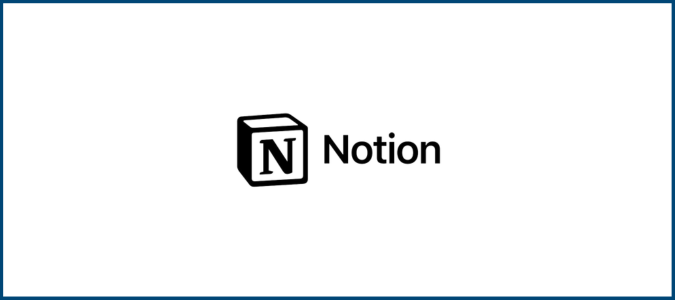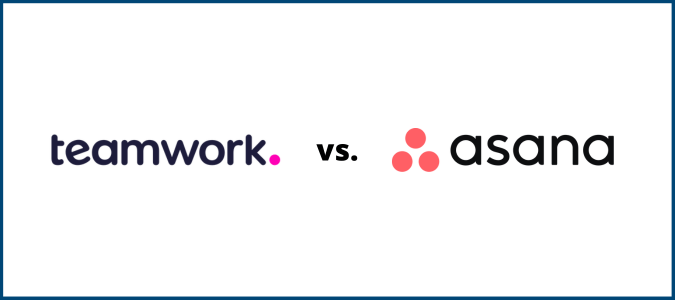Trello and Jira Software are two popular tools for task and project management. In fact, they’re siblings! These two Atlassian products each have their own strengths, so it’s important to know the facts so you can choose the right tool for your needs. This article will explore the differences between Trello and Jira Software so you can know which one you should use.
Trello is a simple, Kanban-style task manager that makes it easy to see what needs to be done and who’s working on what. It’s great for small teams or individual users who need a quick and easy way to keep track of their tasks.
Jira Software is a more powerful tool that’s designed for larger projects with multiple team members. It includes features like sprint planning, time tracking, and advanced reporting. That makes it a more useful option for bigger teams and organizations or agencies that want to deliver detailed analysis of the work they’re doing for clients.

Trello and Jira Software Compared to the Best Project Management Software
Below, you’ll find our Golden Eggs, the best project management software options out of the dozens we’ve tested.
Monday.com is simple and easy to use, but also includes automations that make it suitable for more complex projects. You can start using the software today for free.
ClickUp includes collaboration features and notifications that are great for remote and dispersed teams. Sign up for free or contact ClickUp to build a bespoke paid plan.
Smartsheet is a spreadsheet-heavy tool that features near-limitless customization, so the tool can fit your specific needs. See how it can work for your team with a generous 30-day free trial.
Trello Compared to Jira Software
How do Trello and Jira Software stack up against each other? Let’s start with an overview of each tool’s best traits and use cases.
Trello Highlights
Trello’s Kanban approach to project management involves creating cards for every task and moving them through different stages of completion. That makes it simple to view all your team’s work from one interface.
Within Trello’s cards, you can:
- Add attachments
- Create checklists
- Assign tasks to team members
- Set due dates
- Add comments
But that’s just at the basic level. Trello also includes ways to streamline routine tasks through a simple automation builder, as well as key task organization features like checklists, custom fields, tagging, and labeling.
You can also integrate Trello with many of your business tools, including Google Drive, Slack, and Dropbox.
From smaller teams working together on one project, Trello can satisfy your project management needs. But it tends to wilt (or at least get less affordable) under the weight of larger endeavors or organizations that are juggling multiple concurrent projects.
Jira Software Highlights
Jira Software is powerful PM software that can handle the needs of larger operations. This Agile project management platform includes issue tracking, release management, and reporting, making it particularly useful for development and product teams.
It is also useful for customer service, as you leverage Jira Software features like customer satisfaction reports and help desk ticketing to assist your reps and support center deal with open requests, unresolved issues, and follow-ups.
Jira Software’s interface can be customized to fit your operations. Add plugins and integrations to make Jira Software work the way you want it to and play nicely with the rest of your tech stack. And, create custom fields and workflows to match your internal processes.
One downside is that Jira Software can be tricky to learn with all of its features and customization. But after you get the hang of it, it’s remarkably helpful. For more specialized or complex workflows, the investment of time to learn Jira Software is well worth it for the convenience and PM improvements you can unlock.
Trello vs. Jira Software: Pros and Cons
Testing both of these platform’s free and paid features, we’ve broken down various aspects of each into strengths and weaknesses. Examine these details and you’ll come out the other side knowing which of these platforms will suit you better.
Where Trello Shines
Attractive pricing: Trello keeps their pricing simple and transparent. You can use the free version for as long as you want, or you can upgrade to one of the paid plans for more features, starting at just $5 per user per month. These paid plans unlock custom fields, larger file attachments, unlimited storage, priority support, and more.
Powerful free plan: That being said, Trello’s free features are more than enough for smaller teams. Tap into its essential Kanban board features, like cards, assignments, due dates, and checklists, plus build and run automations. If you don’t need full customization of the platform or capacity for attaching files over 250 MB to cards, you can thrive on Trello without paying a dime.
Clean UI: Trello’s interface is simple and easy to get the hang of. The Kanban style of organizing tasks into cards and boards makes it easy to see what needs to be done and who’s working on what. You can even color-code or tag cards to define what stage of completion each task is in. It is incredibly user-friendly, even for folks who haven’t used it or a Kanban PM platform before.

Collaborative features: Trello allows you to attach files from your computer, Google Drive, Dropbox, or OneDrive, which makes it easy to take work done on other platforms into Trello for hand-offs or reviews. And Trello offers a wide array of notifications to alert team members when anything happens, from comments left and checklist items being marked done to a heads up when a due date is approaching.
Hundreds of templates: The Trello community has created hundreds of Trello board configurations for different types of projects, so you can start using the software right away without having to set a project up from scratch. Whether you need an Agile-friendly board or a sales pipeline workflow, there’s likely already a template available that will fit your needs.
Capable mobile app: Trello is one of the few project management software options with a mobile app that is just as usable as the desktop or web-based version. You can do everything on the mobile app that you could elsewhere, which helps keep up with work when you’re on the go. Plus, its notifications are timely and helpful, so you won’t miss anything important.
Offline functionality: Trello’s offline mode is great for when you need to access your work but don’t have an internet connection. It will take the most recent stored version of your boards and allow you to view and edit them, with your changes synced as soon as you reconnect to the internet.
Where Trello Needs Improvement
Limited viewing options: On the free version of Trello, you can only use the Kanban board layout. But, if you upgrade, you can rearrange your cards and tasks into table or calendar views, though these are both relatively limited compared to what some other PM software platforms offer. And, unfortunately, Gantt charts aren’t offered by Trello, though there is an app you can add to the platform that can generate them.
Clunky commenting threads: Trello’s overall user interface is stellar, but the one drawback is that long comment histories on cards can be difficult to keep track of. Since replies don’t create a dedicated thread, all comments (as well as other actions taken on the card) just appear in chronological order. It’s not the end of the world, but it’s a feature that we would like to see Trello eventually improve upon.
Poor at heavy project work: A few key limitations make Trello fall short as tasks and projects get more complex. First, attachment limitations can be a problem if you’re working with renderings, videos, or other large attachments. The free version limits you to 10 MB per attachment, but Trello paid plans only allow up to 250 MB per file. And while it is good at visualizing straightforward workflows, Trello is less suited for multi-faceted project work like product or web development, where you need roadmaps, dependences, and iteration tracking.
Where Jira Software Shines
Full-scope alignment: Silos are a thing of the past with Jira Software. Jira Software roadmaps help keep teams and departments aligned with one another, no matter how big their organization. Since it’s easy to communicate progress and needs on any level—from the team level to company-wide—users can better plan together while still maintaining visibility on progress and dependencies.
Great for Scrum: Jira Software has first-class support for the Scrum framework. Scrum teams can break down complicated projects into manageable activities, helping them concentrate on their sprints and complete them sooner. And since Jira Software makes it easy for separate teams to stay aligned, you’ll never have to worry about all the individual tasks involved in a complex endeavor getting out of sync.

Deep reporting and insights: Jira Software provides users with up-to-date information on their work progress through ready-to-use dashboards and reports that you can generate on demand. Teams can guarantee successful outcomes efficiently by using this data to track their progress and optimize delivery. And managers can share updates and status with their bosses, project stakeholders, and clients.
Impressive integrations: Look, you should expect your PM software to integrate with the basics like Slack, Gmail, Outlook, and others in that vein. Every quality option does. But Jira Software goes further with integrations than many others. A good example is its integration with Snowflake, allowing analytics teams to connect directly to their data storage and run SQL queries on Jira Software data. Jira Software also integrates with GitHub, so developers can track issues and bugs directly from their code repositories.

DevOps capability: Jira Software gives you visibility into your DevOps workflow and helps you track the progress of your builds, deployments, and releases. This PM platform is one of the best options for software and product development, allowing you to manage dev work, your IT team, and any support or bug fixes. With Jira Software, users can see and quantify their progress from the beginning to the end of the application lifecycle.
Where Jira Software Needs Improvement
Difficult setup: Jira Software’s powerful features give it a steeper learning curve than other options, especially if you’re unfamiliar with Agile project management software. For simple projects, it’s often flat-out overkill. But for ones that merit tapping into Jira Software’s more advanced features, be aware that it may take some time for you and your team to get comfortable with the platform.
Not adaptable to other processes: Jira Software is well-suited for tracking the progress of Agile projects and DevOps work, but it may have trouble with other project scopes. It is limited in its ability to track risks, milestones, and budgets, for example. Sales and marketing teams may find it wanting in this regard, and may find a better fit in another tool.
Poor team communication: While Jira Software integrates well with other tools like Slack, HipChat, and Google Hangouts, it lacks built-in features for keeping everyone on the same page. Namely, team messaging and in-platform notifications are sorely lacking. You can set up custom email notifications, but if your team mostly lives in the app as opposed to their inboxes, those might not be visible enough to be effective.
Add-ons can get expensive: If you are managing a massive development team, Jira Software might be a great option. But even then, building a tech stack inside Jira Software can be confusing and costly. Adding options such as Jira Work Management for your business team, Jira Software for DevOps, or Jira Service Management for customer service can quickly become overwhelming.
The Last Word on Trello Compared to Jira Software
Which is better for your organization? Trello or Jira Software? Jira Software can handle complex undertakings and provides a massive number of features that favor development teams and help them iterate on their products. Trello, on the other hand, is much easier to set up and use out of the box with its Kanban board and it makes it easy for everyone to stay in the loop. But it’s certainly limited enough that it can underwhelm at scale.
In the end, it’s a pretty simple split in terms of scope and size; which makes sense since they’re both Atlassian products. Choose Trello if your team is smaller, but choose Jira Software for juggling several large or technical projects. They also serve different customer bases—a small marketing agency could use Trello to manage client projects well, but an enterprise SaaS company would need Jira Software in order to manage its development process.
Want to learn about more options? Check out our full list of project management software reviews, including the Golden Eggs we provided earlier and other great project management software options.















